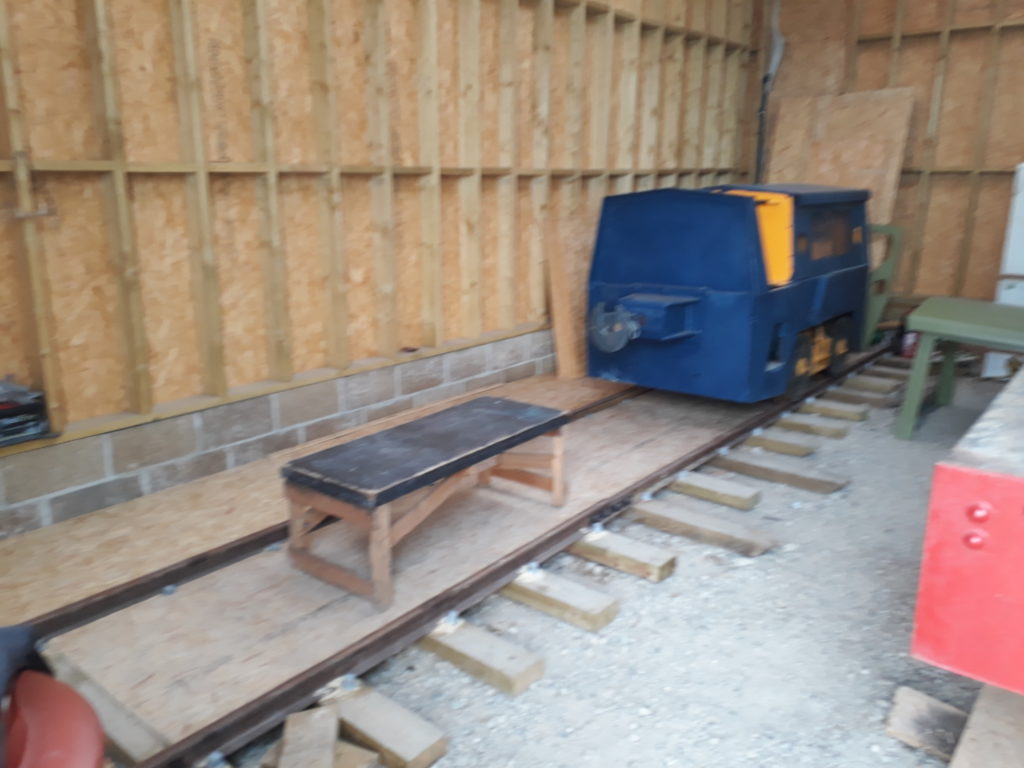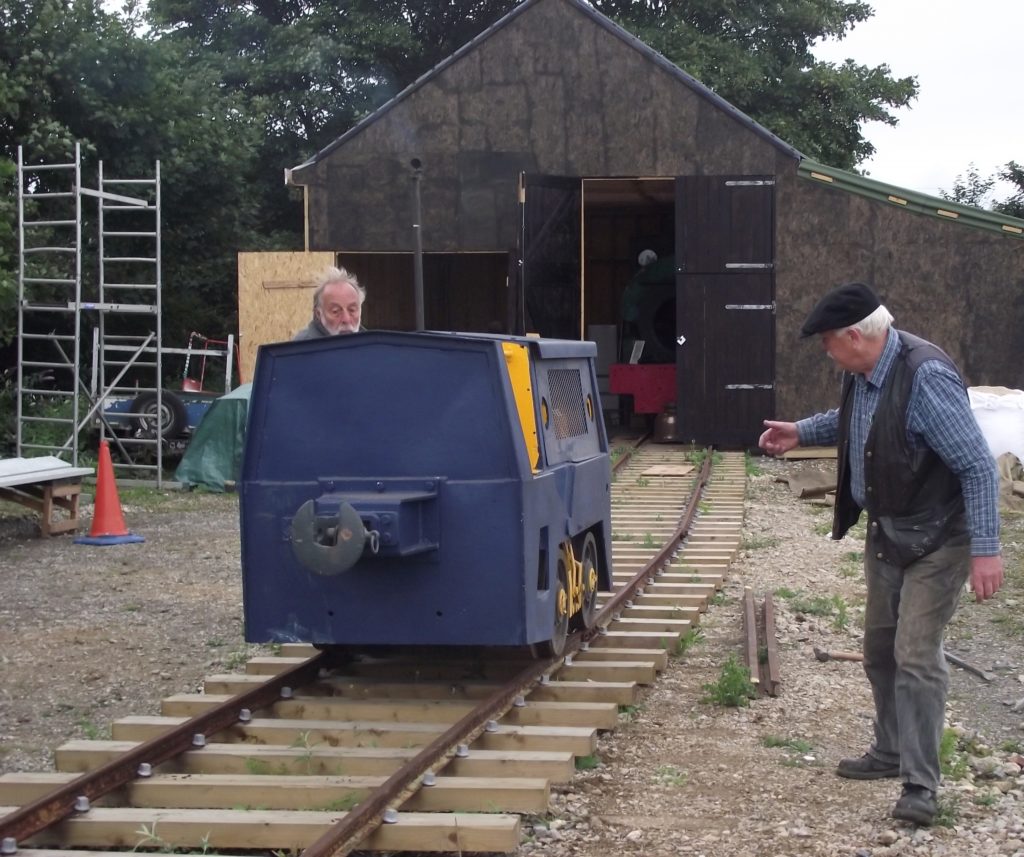
Recently, the Trust wanted to move our on-loan (from owner Peter Nicholson) H-Class Motor Rail loco from one shed road at Southwold onto the other, where there’s a lot more room to work on it. Main problem – we have 9.5 panels of track (yes, we know the 0.5 is odd – it’s a long story), but no pointwork. So, in the time-honoured fashion of many railways in their early days, we thought that we’d slew the track across. Sounds simple.
However, as the rails are pretty firmly spiked (or screwed – more of that later) to our SR-style sleepers, set, as these somewhat resemble matchsticks, very much closer together than in 1879, each panel forms a ladder, and is pretty impervious to bending. Anyway, undaunted, we attacked the end of the panels with our three crowbars, shifting the end sideways, then intermediate points, then the end again – until the set of panels strongly resembled the edge of a threepenny bit (or of a 50p piece, for younger readers): even the best fishplates will bend a little, given enough incentive.
At this point I should mention that the track screws are in fact longer than the sleepers are thick (they are what we had!). That’s fine if you want track to stay exactly where you’ve put it, with holes drilled into the substrate for the track screw ends – but it doesn’t exactly help in slewing – quite the opposite.
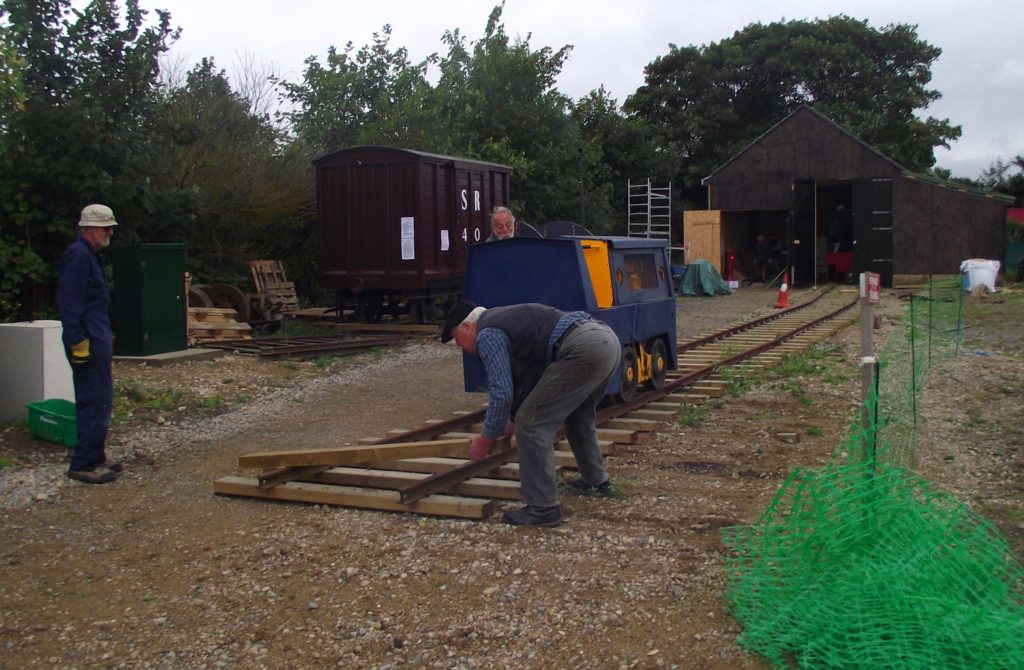
This bizarre trackage then had to be negotiated by the Motor Rail. Luckily for us this has a very short wheelbase (being designed, originally, to fold up), and good wheel profiles with deep flanges – so with a certain amount of trepidation Toby eased her, VERY slowly, over each tortured joint (we had no intention of dropping 3.5 tonnes into the dirt, and the loco is not ours, so deserves even greater care) until she reached the end. As the panels were standing proud of the land, poised half-an-inch or so above datum on the track screw ends, these then successively bored into the substrate under the loco’s weight (an odd sight). Then, of course, we had to do it all over again, splitting the siding in half, and again slewing the end and intermediate parts to the south, including lifting each panel out of its self-made set of holes.
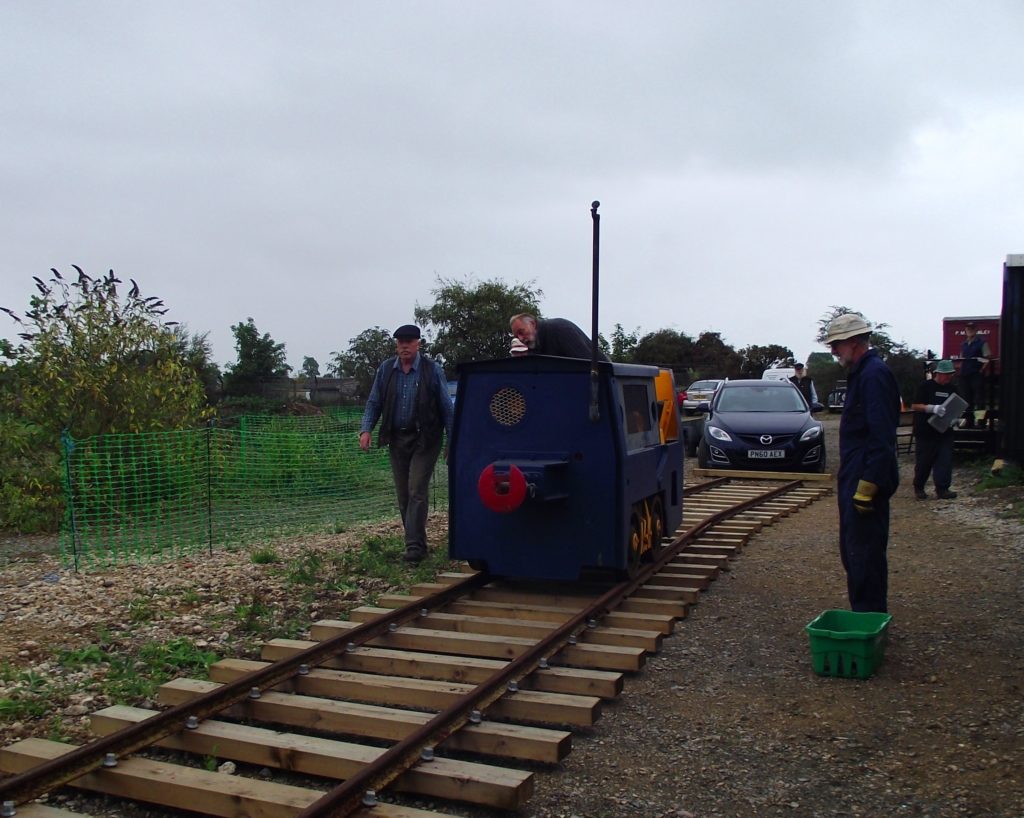
That left some track at the far end, which we needed to use to fill the gap between the slewed trackage and the shed road. Naturally, this gap did not in any way comply with available track panels, in any combination (cue much back-of-an-envelope calculation and head-shaking). So we – very laboriously – slid complete panels (they are heavyish, with their sleepers as well) sideways, then lengthways on timber sliders, feeling a bit like the builders of the pyramids (we might have had some help from an SRT towing van, perhaps, and even a little help from the Motor Rail itself) until we could re-attach them. Then there was a gap.
We have some temporary panels made up of 2” square-section steel with welded cross-pieces, and two of these ALMOST filled the gap (bear in mind that you can’t slew rails lengthways when a loco is sitting on them, and that these particular panels are totally rigid). Improvisation in the form of timber and steel saved the day – but we then ran the loco even more slowly over another even-more-threepenny-bitty (if that’s a phrase) set of panels, and finally, triumphantly, into the other shed road, using it for the first time. Slewing the track after that was (relatively speaking) a doddle, and the Motor Rail H-class was safe throughout (not sure if we can say that about the track, though).
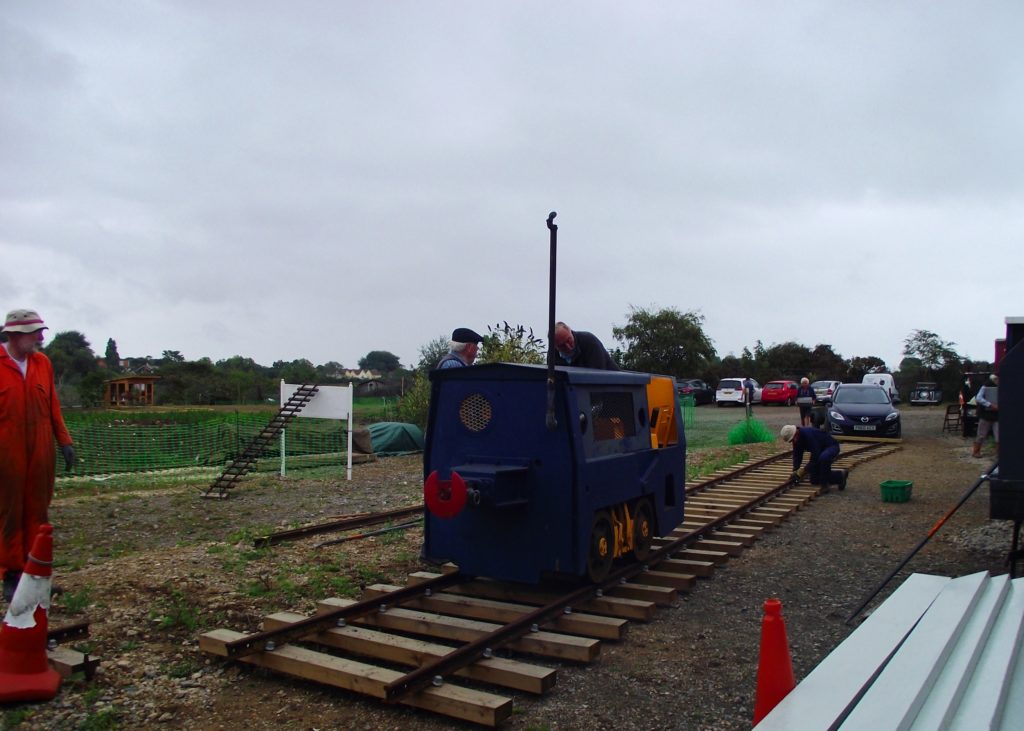
It all goes to show that a small but dedicated team can accomplish almost anything: but it also goes to show that we MUST find some pointwork. We are not expecting three-foot – that’d be a miracle – but can, with help from some of the Chairman’s old mates at the WHHR, happily re-gauge 2-foot, 2’6”, or metre: ideally we need 40lb, 45lb or 50lb rail in two conventional points (one LH, one either way or wye) and one 3-way, slightly offset (don’t fancy having to cope with two blades on each side, one on top of the other) – all, ideally, 1 in 8, or at the tightest 1 in 6. Can anyone out there help us to avoid the kind of day (and number of blisters and wrecked backs) we suffered this time?
